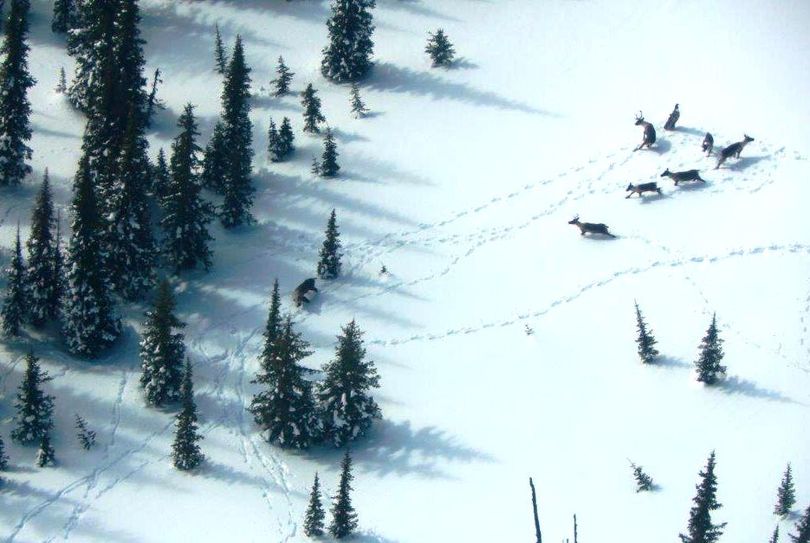Photo: Endangered Selkirk Mountains caribou still hanging on

ENDANGERED SPECIES -- Wildlife biologists have been in the air in northeastern Washington and the Idaho Panhandle recently trying to keep track of of the last remaining caribou in the lower 48 states. The woodland caribou are the country's most imperiled wildlife species.
The band of endangered caribou pictured above, part of the Southern Selkirk Mountains herd, was photographed by Bart George, Kalispel tribal biologist, on Feb. 24 just north of the U.S.-Canada border.
Dramatic measures have been undertaken in attempts to save the herd, which suffers from old-growth habitat destruction, highway collisions in Canada and predation. Lawsuits have challenged U.S. Forest Service decisions to reduce habitat protections for caribou.
Eleven wolves were killed in the Southern Selkirk Mountains of British Columbia by provincial wildlife staff last year during a winter effort to reduce predation on the dwindling caribou herd that ranges in Canada as well as in Idaho and Washington.
At that time, only 14 caribou remained in the herd, which survives on lichen from old-growth trees during the winter. With the caribou numbers shrinking, the tribe wanted to move quickly on a plan that brings together recent scientific studies and strategies for increasing herd size.
The South Selkirk caribou are federally protected as an endangered species. But past management efforts have been controversial, resulting in unpopular closures of winter snowmobiling areas. Many federal actions have been challenged in court.
The Kootenai Tribe has a reputation for bringing together opposing sides on divisive issues. In recent years, the tribe has won local support for rebuilding sturgeon populations in the Kootenai River and restoring forest landscapes.
Caribou are members of the deer family. Their stocky bodies are covered with hollow hair that insulates them against the cold, and their dinner-plate-size hooves function like snowshoes.
The South Selkirk herd has behavioral traits that set them apart from other caribou. When the winter snows set in, they head to inhospitable ridge tops, where they spend the winter eating lichen that grows on trees. Other caribou stay in the valleys.
Over the past decades, wildfires and logging have reduced old-growth habitat. Deer, elk and moose have moved into reforested areas that were once the domain of caribou. Cougars and wolves have followed.
